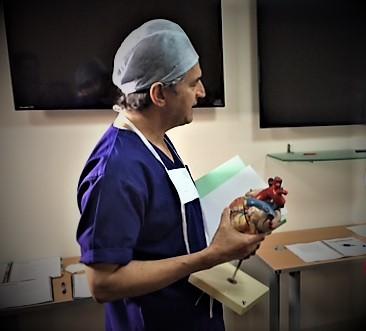Tag

Vins Fertility
Top Surrogacy IVF, Centres in Faridabad VinsfertilitySurrogacy is offered by the best surrogacy center. These infertility places sort out everything that is required pre, post, and in the midst of the surrogacy interaction. There are various infertility clinics that additionally arrange convenience administrations for couples who are coming from different nations. It's anything but the Best IVF and Surrogacy centres in Faridabad. In urban areas like Faridabad, there is consistently a shortage of super expert places and medical services professionals. The following are the Top Surrogacy Centers in Faridabad with options to book an appointment.
view this profile

Sangeeta sharma
IVF center in KolkataInfertility is a condition of reproductive system, whereby, an otherwise healthy female is unable to conceive even after normal unprotected intercourse. Infertility could affect men as well as women. There are several methods available to treat infertility. Women get advised to control their way of consuming calorie based food, especially on the verge of getting pregnant. Less attention is being placed on men when it comes to Obesity. Recent research and studies have proved that the male partner determines the quality of sperm, which is healthy enough to fertilize an egg. A man's health has a high impact on the couple's probability of conceiving. Any obese man or woman will have a primary fertility problem. It comes worse when the couples are both having obesity issues. Vinsfertility Pvt Ltd focuses on both aspects very well works with the best ivf centers in Kolkata. Treatment done with Vinsfertility helps discount in cost effective and they have a 70% success rate which is better than most other treatment centres in India. Vinsfertility works with the best ivf doctors in Kolkata who are known to have great success in infertility field.
view this profile

Shridhar Aggarwal
Ayurveda DoctorWe at Dr. Aggarwal's Ayuvedic Panchakarma & Research Centre are leaders as providers of Professional Ayurvedic, Panchakarma & Yoga Services. We provide ayurvedic treatment for kidney failure, ayurvedic treatment for cancer, ayurvedic treatment for heart blockage, ayurvedic treatment for diabetes.
view this profile

Metro Clinic
HospitalIf you are looking for Piles Treatment in Delhi, that's your end of the journey from Metro Piles Clinic. Here, you can get Know more about Piles causes, symptoms and treatment at Metro Piles Clinic. Book an appointment online for Piles Treatment in Delhi with our Dr. K.K. Mishra, call us: 9899100200.
view this profile
Directory:
Tags:

|
Devi Shetty’s model for affordable healthcare
On the 26th March 2019 Bloomberg Businessweek published an article entitled, "The World’s Cheapest Hospital has to Get Even Cheaper”, which describes one of India’s largest private hospital chain's - Narayana Health - response to Modicare, a signature initiative by Prime Minister Narendra Modi to provide basic healthcare for 500m of India’s poorest. Devi Shetty, a world-renowned cardiac surgeon and chairman of Narayana Health, is up for the task. Since Shetty founded Narayana in 2000 it has grown to become a large multi-speciality hospital chain, comprising 31 state-of-the-art tertiary hospitals across 19 cities, employing 16,000 and each year treating over 2.5m patients across more than 30 medical specialities. Shetty’s mission is to provide high quality, affordable healthcare services to the broader population in India and he is convinced that quality and low-cost healthcare are not mutually exclusive. In conjunction with the state of Karnataka, Shetty has created a health insurance plan, which has enrolled some 3m poor people at an annual premium of about US$2.6. More than half of Narayana’s cardiac operations are performed on patients too poor to afford the full cost. In addition to the insurance scheme free or subsidized inpatient care is achieved through philanthropy and a cross-subsidy model, in which higher-income patients pay more for nonclinical amenities, such as private recovery rooms. Since the total charges are still far below the cost of comparable services at other private Indian hospitals, Narayana Health remains an attractive option for such consumers. Narayana Health’s business model is sustainable because of its ability to attract so many patients who can pay full price. The Wall Street Journal has dubbed Shetty, The Henry Ford of Heart Surgery because he applies assembly line concepts to surgery in order to optimize productivity, minimize costs and leverage economies of scale. Because of these innovations the average cost of open-heart surgery, as reported by Narayana Health, is less than US$2,000. The same procedure at a US research hospital typically costs more than US$100,000. Since 2012 HealthPad has worked closely with Devi Shetty. We published our first Commentary about Narayana Health and Devi Shetty’s model for affordable quality healthcare in 2013 and in subsequent years published two more. Shetty and his fellow senior surgeons have contributed over 700 videos to HealthPad’s content library, which address FAQs across 11 clinical pathways. Further, Narayana’s clinicians have featured in HealthPad Commentaries on Chronic obstructive pulmonary disease (COPD), Diabetes and Kidney Disease and Cardiovascular Disease. Because of the large and growing international interest in Shetty’s alternative model for affordable healthcare we re-publish lightly edited versions of HealthPad’s three Commentaries about Narayana Health. |
|
|
|
Directory:
Tags:

The UK’s NHS loss is global healthcare’s gain
Shetty’s no-frills hospital chain owes its existence to his pioneering hospital in Bengaluru.
Medicines and associated hospital costs in India are significantly lower than in the West, but Narayana offers Indian patients value for money. The average price for open heart surgery in Narayana is around US$2,000, compared to US$5,000 in the average private Indian hospital and $20,000 to $100,000 in a US hospital.
Shortly after starting his Bengaluru cardiac centre, Shetty acquired a 35-acre site next door and built a 1,400-bed cancer hospital and a 300-bed eye hospital and created Narayana Hrudayalaya Medical City, which has 3,000 beds in Bengaluru and is run at near to full capacity. In total Narayana has some 7,000 beds in a number of clinics and hospitals throughout India, and plans to expand to 50,000 beds in the next five years.
Shetty however is not a charity. His hospitals treat a cross section of patients at variable rates but refuse to turn away anyone who cannot pay. “Charity,” he says, “is not scalable. Good healthcare depends on good business.” Shetty’s hospital group earns an after-tax profit of 8%, slightly above the 6.9% average for a US hospital.
The first phase, a 140-bed tertiary care facility for cardiac surgery, cardiology and orthopaedics, was opened in 2014 and benefits from the cost-effective healthcare procedures honed by Shetty over the past decade. By 2020, the Cayman enterprise, which also will have a medical university and an assisted-care living community, is projected to expand into a 2,000-bed Joint Commission International-accredited Health City providing care in all major specialties.
"Current regulatory structures, policies and business strategies [for healthcare] are wrong,” says Shetty, “If they were right, we should have reached 90% of the world's population." Recently, he shocked a UK audience of health providers by suggesting that it would be better if England only had three centres for cardiac surgery rather than 22.
Directory:
Tags:
Directory:
Tags:

|
|













